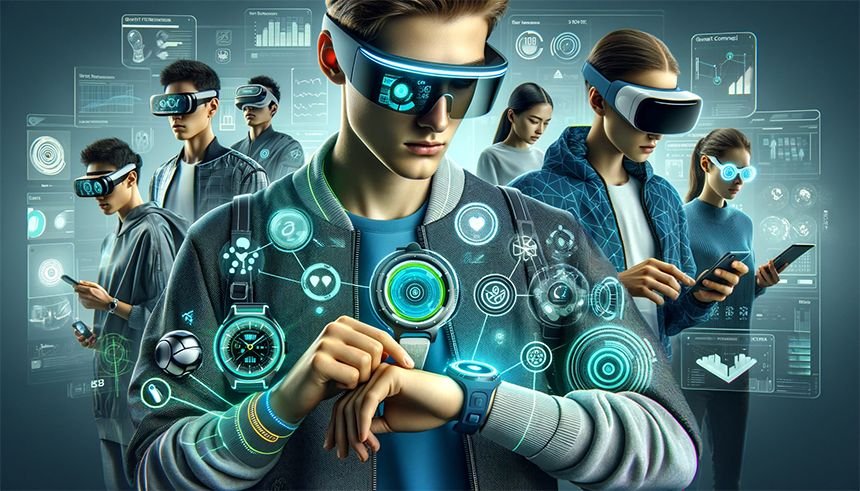The healthcare industry is undergoing one of the most transformative shifts in its history, driven by the rapid adoption of digital health technologies. From virtual consultations to AI-powered diagnostics and wearable health monitors, technology is redefining how medical care is delivered, accessed, and experienced. What was once considered futuristic is now becoming mainstream, marking the beginning of a new era in global health — one that prioritizes convenience, prevention, and personalization.
Telemedicine: Healthcare Without Borders
Telemedicine, the practice of delivering medical consultations through digital platforms, saw explosive growth during the COVID-19 pandemic and has since become an integral part of modern healthcare. It allows patients to consult doctors, receive prescriptions, and access follow-ups — all from the comfort of their homes. This not only saves time but also reduces the burden on hospitals and clinics.
In countries like India and the United States, telemedicine has bridged critical gaps in rural and remote areas where medical professionals are scarce. Platforms such as Practo, Teladoc, and Amwell are helping millions connect with doctors through video calls, chats, and AI-supported triage systems. Moreover, health insurers and employers are increasingly integrating virtual care into their services, recognizing its potential to lower costs and improve accessibility.
However, the challenge remains ensuring consistent quality and cybersecurity. As telemedicine becomes more data-driven, maintaining privacy and secure digital records is crucial. Governments worldwide are now drafting stronger digital health regulations to protect patient information and standardize telehealth services.
AI Diagnostics: The Rise of Intelligent Medicine
Artificial intelligence is revolutionizing medical diagnostics, enabling faster and more accurate detection of diseases. AI algorithms can now analyze medical images — such as X-rays, CT scans, and MRIs — with precision levels comparable to, and sometimes exceeding, human specialists. This has tremendous implications for early diagnosis, particularly in critical conditions like cancer, cardiovascular disease, and diabetes.
For example, Google Health’s AI models have demonstrated remarkable accuracy in identifying breast cancer risks, while DeepMind’s algorithms are helping ophthalmologists detect eye diseases at earlier stages. Beyond imaging, AI systems are being used to predict patient deterioration, recommend treatments, and assist doctors in managing large datasets.
AI diagnostics are also proving valuable in under-resourced regions, where access to specialists is limited. Mobile-based AI diagnostic tools can analyze symptoms and images in real time, providing rapid insights to primary care providers. While doctors remain at the center of decision-making, AI is fast becoming their most powerful ally — enhancing precision, reducing diagnostic errors, and saving lives.
Wearable Health Monitors: Empowering Everyday Wellness
The rise of wearable health technology has made personal health tracking more accessible than ever. Smartwatches, fitness bands, and even smart rings now monitor heart rate, sleep cycles, blood oxygen levels, and stress patterns continuously. Advanced devices, like the Apple Watch and Fitbit Sense, can even detect irregular heart rhythms or warn users of potential cardiac issues before symptoms appear.
Beyond fitness, wearable tech is expanding into clinical care. Continuous glucose monitors (CGMs) help diabetic patients manage blood sugar levels without constant finger pricks. Similarly, wearable ECG patches and remote monitoring devices allow doctors to track chronic patients in real time, ensuring timely intervention. This constant stream of health data enables personalized care plans and early detection of anomalies, turning preventive healthcare into a daily practice rather than a periodic check-up.
The Connected Future of Healthcare
The convergence of telemedicine, AI diagnostics, and wearable technology is creating a fully connected healthcare ecosystem. Data collected from wearables can feed into AI-driven analytics, which doctors can access remotely through telehealth platforms. This integration creates a seamless cycle of monitoring, analysis, and consultation — allowing healthcare to shift from reactive treatment to proactive prevention.
However, experts emphasize that digital health adoption must be inclusive. Reliable internet access, digital literacy, and affordability remain barriers in many regions. For the digital health revolution to succeed, governments and private players must collaborate to make these technologies accessible to all socioeconomic groups.
As we move into the next decade, digital health will continue to evolve — not just as a convenience but as a necessity. With AI improving precision, wearables enhancing awareness, and telemedicine breaking boundaries, healthcare is becoming more human-centered than ever. The digital transformation of medicine is not replacing doctors; it’s empowering them — and giving patients greater control over their own well-being.
